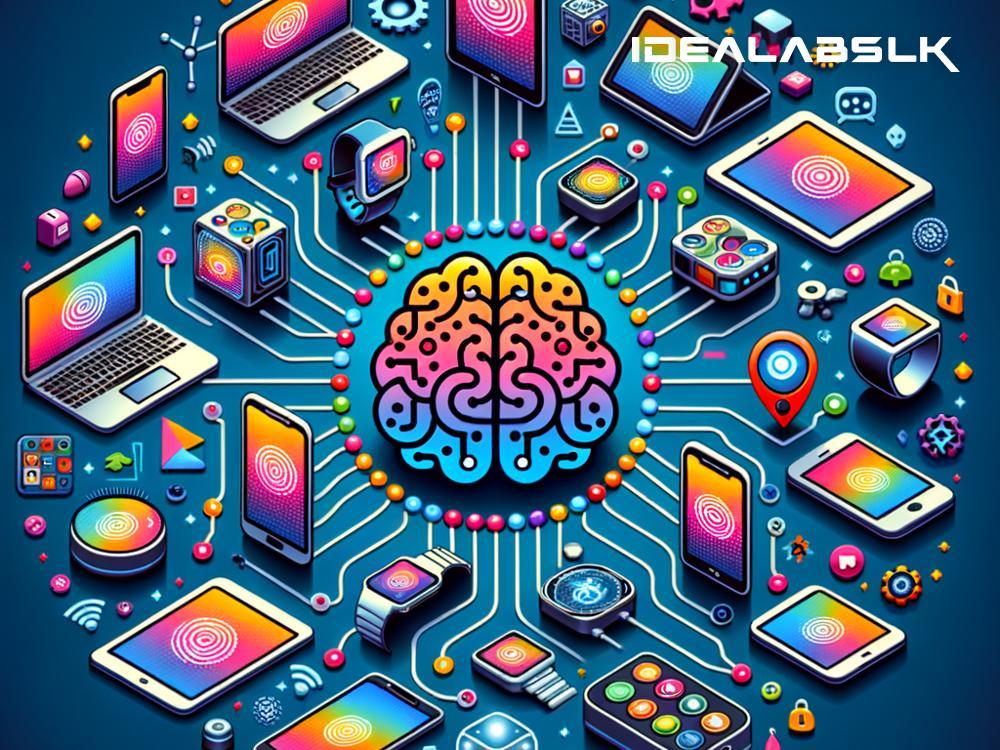How AI is Transforming Multi-Device Connectivity into a Smooth Experience
In the digital age, our lives are intertwined with a variety of devices – smartphones, laptops, smartwatches, and even smart home devices. We rely on these gadgets for everything from communication and work to entertainment and comfort. However, managing multiple devices can sometimes feel like conducting a symphony orchestra without a conductor – it's possible, but far from seamless. Enter Artificial Intelligence (AI), the maestro making seamless connectivity in multi-device environments not just a possibility but a reality. Let’s explore how AI is simplifying our digital interactions by enhancing connectivity among our devices.
Understanding Multi-Device Environments
Imagine starting a movie on your smart TV, then pausing it to continue watching on your tablet in bed, without missing a beat. Or consider how your smartwatch not only tracks your fitness but also controls the music playback on your phone. This interconnectedness, where devices communicate and work together to provide a unified experience, constitutes a multi-device environment.
The Challenge of Connectivity
The dream of seamlessly linked devices faces a major hurdle: different devices have different capabilities, operating systems, and interfaces. This diversity, while offering choice to the consumer, complicates connectivity. Additionally, security concerns and data privacy issues add layers of complexity to creating a cohesive multi-device ecosystem.
How AI Comes Into Play
Artificial Intelligence, with its ability to learn, analyze, and make decisions, is perfectly poised to tackle these challenges head-on. Here’s how AI is powering seamless connectivity:
-
Learning User Preferences: AI algorithms can learn from your interactions across devices. This learning enables AI to predict and adapt to your needs, making device connectivity feel intuitive. Imagine your smart home automatically dimming the lights and lowering the thermostat at your usual bedtime, all because it has learned your habits.
-
Contextual Awareness: AI enhances devices with contextual awareness – they not only know what you're doing but can anticipate what you'll need next. For example, your car's navigation system might automatically start giving you traffic updates when it knows you're about to drive to work, thanks to syncing with your calendar.
-
Facilitating Communication Between Devices: AI helps bridge the gap between different device ecosystems. Through AI, your smartwatch (even if it's from a different brand than your phone) can still manage to send notifications or control music on your phone seamlessly.
-
Improving Security: AI also plays a crucial role in ensuring that this interconnectedness doesn’t come at the cost of security. It can detect unusual patterns or breaches in your device network and take immediate action, like blocking a suspicious login attempt from an unrecognized device.
-
Optimizing Performance: AI can also manage the resources of connected devices, ensuring that they run efficiently. For example, it can reduce the screen resolution on your smartphone when it knows you’re about to start a demanding game, ensuring smooth performance without manual adjustments.
The Impact of AI on Everyday Connectivity
The application of AI in powering seamless connectivity has profound implications for both consumers and businesses. For individuals, it translates to a more integrated and efficient digital life. Tasks and information flow smoothly from one device to another, breaking down barriers between gadgets and making technology more accessible and user-friendly.
For businesses, AI-driven connectivity facilitates better data-driven decisions. It enables the creation of smarter products that understand and adapt to consumers' evolving needs, opening new avenues for innovation and enhanced customer satisfaction.
The Road Ahead
As AI continues to evolve, the future of multi-device environments looks even more promising. We can expect even deeper integration among devices, with AI at the helm, leading to experiences that are currently hard to imagine. Perhaps, a day when our devices not only manage our digital lives but predict our needs even before we're aware of them, isn't too far off.
In Conclusion
The role of AI in enhancing connectivity in multi-device environments cannot be overstated. It’s making device management simpler, smarter, and more secure. As we move forward, AI’s influence will only grow, making our interactions with technology smoother and more intuitive. The digital symphony of our gadgets, under the baton of AI, is set to play a harmonious tune that enriches our lives in countless ways. So, here's to the future – a future where technology truly works for us, making our lives not just connected, but seamlessly integrated.

